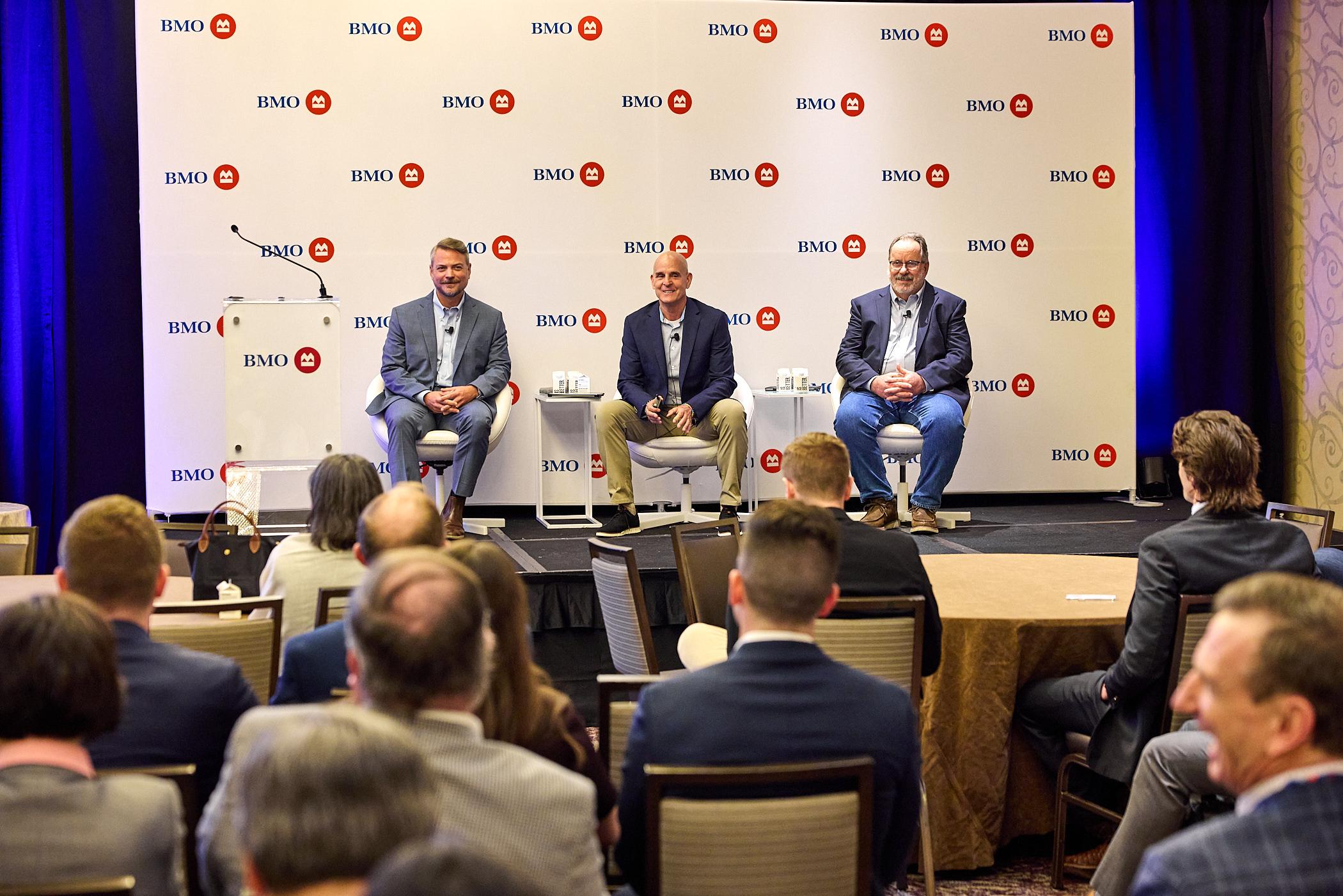The U.S. wine industry is the most dynamic in the world, but it has seen its fair share of headwinds in recent years. While many challenges remain, the industry has some reasons for optimism about its outlook.
For instance, despite a market volume decline of 10% in 2023, consumers are spending more on wine. There’s also an expectation that the industry will once again ship upwards of 400 million cases of wine by the end of 2025, up from around 377 million cases in 2023.
That’s why market trends and insights from our inaugural BMO Wine Market Report, the most complete analysis of the B2B wine industry, were the central focus of discussion during the State of the U.S. Wine Industry panel that I moderated at our 19th annual Farm to Market | Chemicals Conference in New York. The conversation included:
Andrew Adams, Writer and Editor at WineBusiness Analytics
Jon Moramarco, Managing Partner at bw166
During our conversation, we highlighted some of the key trends identified in the report and our outlook for the sector.
The issue with inventory
It’s widely assumed that a dramatic increase in alcohol consumption is what pushed up wine and spirit sales during the pandemic, but data from the report says otherwise. “We’re now learning that people didn’t really drink more,” noted Jon Moramarco, whose company bw166 specializes in data analytics in the beverage alcohol industry.
Supply chain disruptions caused wholesalers to buy more inventory to avoid running out of stock in case disruptions were more sustained, he said. It wasn’t just wholesalers, though – retailers also increased their inventories, as did consumers. With in-person wine tastings unavailable, wineries sent email blasts out to their wine club members, which led to what’s known as pantry-loading.
The resulting growth in 2020 and 2021, and subsequent drop-off is a basic tenet of business: inventory building and destocking. The same trend can be seen in the traditional spirits market, and both industries saw similar declines in 2023.
“We have to look at different tidbits of information to understand what’s going on in the market,” added Moramarco. Right now, inventory destocking is happening with wholesalers and retailers, which means wine producers are having a bit of a rough moment because of lowered demand. Prior to the pandemic, wholesalers and retailers carried about 55 days of inventory, which increased to 65 days during the pandemic. While that wouldn’t have seemed like a big difference five years ago, the increase in interest rates has raised the costs of carrying that inventory. Now, to manage those higher costs, retailers and wholesalers have reduced their inventory to just 15 days. Consumers, however, are still buying wine, which indicates the industry remains healthy.
Consumer trends
As to what consumers are purchasing, that is indeed changing. What used to be a thriving segment of the market, retail table wine under $10, has seen a continuous decline in sales over the past decade. On the other hand, sales of retail table wine more than $10, particularly in the $12 to $15 range, have continued to grow during the same time frame.
“It requires a shift in where producers focus their energies,” noted Moramarco, “but there are opportunities out there.”
WineBusiness Analytics’ Andrew Adams, who is the editor of the Wine Analytics Report, a monthly digital report on the U.S. wine industry, pointed to some additional consumer trends in terms of demographics.
When it comes to different generations of wine drinkers, Adams noted that consumption is decreasing in both the Baby Boomers and the older generation as they age, while Gen X is stepping in to take their place – which is not unexpected. The same isn’t happening with Millennials and Gen Z, however.
“We haven’t seen as much adoption by the younger generations…and that continues to be a challenge that is not unique to wine,” Adams added.
Boomers have been the wine industry’s most consistent and loyal consumers, so as they age out of drinking alcohol, this lack of growth in younger generations could spell trouble for sales.
The way forward
If the industry is going to connect with a younger and more diverse population in the coming years, there will need to be changes. One example Adams cited was the direct-to-consumer market, which has been a major source of sales for smaller wineries.
“Younger Millennials and Gen Z have little to no desire to be in a wine club with rigid quarterly shipments with six bottles of what [wineries] want to sell you,” he explained. “They want more of a service.”
Another change is the growth of major brands offering private label options to achieve placement in national retailers. The result is winemakers’ own brands competing with the private labels they’re sold next to on shelves.
More flexibility and the ability to adapt to new consumer preferences is what will help U.S. wineries reach their anticipated growth levels in the next few years, according to the report.
Looking at these industry trends, Adams says he’s optimistic, despite some of the challenges. “You need to know who your customers are. You need to know how they’re changing, what their preferences are, and then make that sale in a meaningful way so that you can maintain that relationship,” he said.
